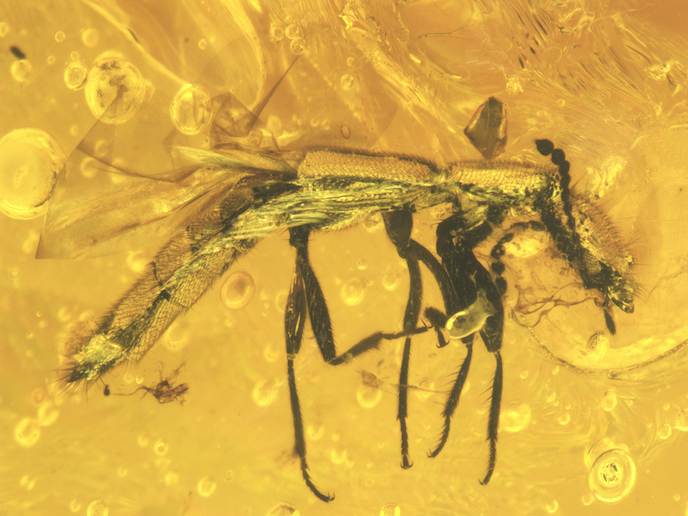Dating amber: fresh clues to evolution of insects
Baltic amber is a key source of information on species evolution. This fossilised tree resin found in the Baltic Sea region provides insights into ancient ecosystems by preserving organisms from a distant past. But how distant a past exactly? The EU-funded AMBER project has provided new tools for solving a riddle which has baffled researchers for years. The research, which was undertaken with the support of the Marie Skłodowska-Curie Actions programme, delivered an innovative method for estimating the age of fossil deposits. “The new method can be used for establishing the age of fossil deposits using the phylogenetic approach, which is a significant advancement of science,” highlights Dagmara Żyła, Marie Skłodowska-Curie research fellow and AMBER project coordinator.
Combining data
In phylogenetics, the evolutionary history of species is reconstructed using present-day data such as morphology. “The method uses genetic information as well as morphological data on extinct and living species and combines these using advanced Bayesian statistics for estimating when new species emerged,” Żyła explains. Baltic amber is believed to date from the Eocene epoch, with an age range of 34 to 55 million years. Applying the new methodology to further narrow down this range will require gathering a large number of well-dated fossil samples from non-Baltic deposits and combining these with Baltic amber to date the latter.
Evolutionary success
While this process has been hampered by the ongoing pandemic, the research carried out has already contributed to improving our knowledge of an insect family of major importance for evolutionary research: Paederinae rove beetles. “Rove beetles are the largest family of animals and a great example of evolutionary success, with around 64 000 known recent species that have adapted to nearly all possible terrestrial habitats and modes of living,” Żyła says. Paederinae are one of the oldest and most diverse rove beetle subfamilies. The methodology developed by the AMBER project has enabled Żyła and her team to trace this current diversity back to the Cenozoic era, which started 66 million years ago, and possibly narrow this timeframe further down to the Eocene. As Paederinae rove beetles have potential for biomedical uses, pest management and conservation research, expanding our knowledge of their evolution could have wider societal implications.
Climate change, then and now
Dating Baltic amber could also make an important contribution to climate change research: “The Eocene was a time of drastic climatic changes,” Żyła adds. “Reconstructing evolutionary events and species composition during this period could provide indications on how the past ecosystem reacted to these changes, how it functioned at the time of ‘hothouse’ conditions, and how it recovered from global warming. The results of the project provide a tool for further research on these aspects.”
Keywords
AMBER, Baltic amber, Eocene, fossils, phylogenetic, evolution, Paederinae rove beetle, climate change



